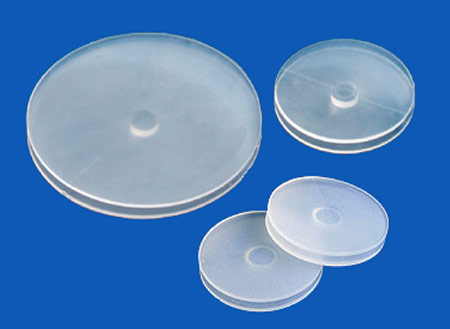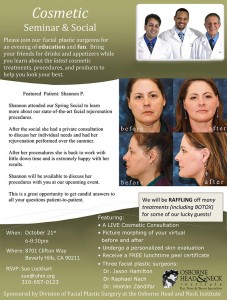- Hereditary Hemorrhagic Telangiectasia - May 25, 2016
- Hereditary Hemorrhagic Telangiectasia: Septal Perforation and Nose Bleeds - May 23, 2016
- Hereditary Hemorrhagic Telangiectasia: Epistaxis and Septal Perforation - May 18, 2016
- Wegener’s Granulomatosis: Autoimmune Disease and Multi-Focal Septal Perforation - May 9, 2016
- Kyle Korver: Facial Injury and Nasal Fracture - March 24, 2015
- Russell Westbrook: Facial Injury and Surgery - March 5, 2015
- Mega-perforation: Pushing the Limits of Septal Perforation Repair - November 26, 2014
- Septoplasty Complication and Septal Perforation - November 24, 2014
- Nose Picking (Rhinotillexis) and Septal Perforations: Why I should stop picking my nose…? - November 24, 2014
- Nasal Fractures, Septal Hematoma, and Septal Perforation: Simultaneous Rhinoplasty and Septal Perforation Repair - October 1, 2014
Can septal perforations heal without intervention?
Question: My ENT doctor has diagnosed me with a septal perforation. It happened after a “routine” septoplasty, after which I had a lot of bleeding from the left side of my nose that made a really big scab and blocked my air passage. After the doctor pulled it out, the scab, she said there was a small “rent” in my septum and that it should heal without a problem. When I followed up a month later my nose felt better but she then said there was a small hole in my septum and that we should just watch it and “see”. I’m really worried my nose is going to fall apart. Is it possible for the hole in my septum to heal on its own or is she just trying to make me feel better?
Figure 1 a, b: Septal perforations can be seen on physical examination of the nose as a through-and-through hole in the nasal septum. Unobstructed light can easily be seen through the opposite nostril. Turbulent airflow through a nasal septal peforation causes excessive drying and crusting within the nose, which can lead to chronic nosebleeds, purulent discharge, foul odors and nasal congestion. A) Nasal endoscopy confirms the size and the location of the perforation where contralateral nasal turbinates are easily visualized. B) The normal intact septum shows no pathway for air to escape to the other side of the nose. (Images courtesy of Osborne Head & Neck Institute, Los Angeles, California)
Discussion: A septal perforation is a known complication of septoplasty procedures. Discomfort and bleeding immediately in the post-operative period is not unusual and is caused from surgical swelling and small abrasions to the surfaces of the nasal septum. Your surgeon should be alerted immediately as these symptoms are easily controlled with pain medication, drainage of any fluid collections, and nasal wound care. If pain, crusting, whistling noises, and bleeding continues even after things have seemed to heal then you may have developed a septal perforation. A septal perforation is hole in the septum, which divides the nose into two separate nasal passages. The septum is important in organizing and controlling the airflow through the nose. When the septum is abnormal, either deviated (deviated septum) or suffers a perforation (septal perforation) the air flowing through the nose becomes irregular and turbulent. (Figure 1a,b). The abnormal flow of turbulent air through the nose can lead to excessive dryness causing nosebleeds, crusting and nasal obstruction. Large perforations can also affect the appearance of the nose as the septum collapses deforming the nose.

Figure 2. Septal buttons are composed of silastic rubber splints that can bridge and cover small septal perforations less that 1.5-2.0cm in size. They are secured by a central “button’ that attaches the two sides to one another through the center of the perforation. These can be used temporarily to relieve symptoms or for as long as a patient can tolerate them in the nose. Surgical repair of the perforation elimates the need for septal buttons and restores the nose to its normal anatomy. Patients with large perforations are not candidates for septal buttons as they shift back and forth in the nose and do not adequately cover the perforation.
Treatment- Surgical repair of the septal perforation is curative, however, this procedure should only be performed by a surgeon experienced with septal perforation repair as this procedure carries a high rate of surgical failure. At the Osborne Head & Neck Institute, Dr. Jason Hamilton performs septal perforation repair regularly, has high success rates and has helped many patients with chronic symptoms find relief. Many physicians will recommend a septal button, which is a silastic rubber splint that bridges the hole relieving symptoms. The septal button is a good stop measure for symptoms, but must be worn permanently to keep symptoms at bay. Septal buttons (Figure 2.) are also only appropriate for perforations less that 1.5-2.0cm in size. They are not appropriate for larger perforations. In the above case the perforation will not heal on its own, but may remain small and be relatively asymptomatic. The patient should follow-up regularly and seek treatment immediately if symptoms increase in severity, the hole begins to enlarge, or the patient notices cosmetic changes to the appearance of the nose.
Key Points:
Symptoms: Septal perforations can present as a complication after septoplasty as two opposing tears in the septal membrane align and heal to one another. Perforations may also occur from hematoma formation after excessive bleeding.
Treatment: Surgical repair is curative and relieves symptoms. A septal button (a silastic rubber plug) can also be used to temporarily relieve symptoms prior to definitive surgery.
Surgical Procedure: Surgical experience counts most in these cases because of generally low success rates. Dr. Hamilton has a high success rate for the closure of septal perforations, large and small, and performs septal perforation surgery regularly.
Read patient stories about Dr. Jason Hamilton, of the Osborne Head & Neck Institute.
To learn more about septal perforation repair with Dr. Jason Hamilton, click here: http://www.perforatedseptum.com/





